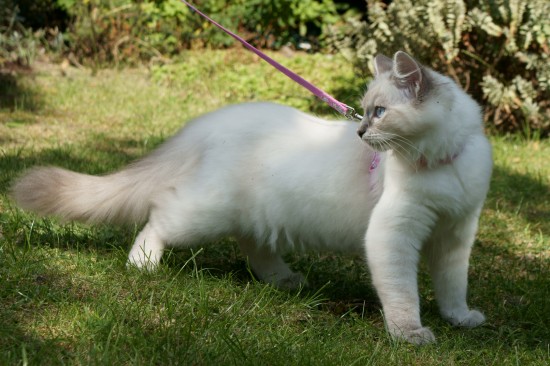
How to fight fleas
The natural way:
* Vacuum your home frequently and seal vacuum bags before
disposing.
* Wash the bedding of your dog weekly in warm soapy water. This
is where fleas usually breed.
* Bathing your pet weekly with a mild dog shampoo prevents flea
invasion.
* Use cedar shampoo for your dog, and put cedar oil in their
sleeping mats. Cedar will repel fleas and other insects.
* Fleas are attracted to dry skin, so to avoid it, give your dog
Linatone oil mixed with its food. Excessive shampooing should be
avoided.
* A mixture of brewer’s yeast and garlic, available in powder or
tablet form can be given in small doses to your pet. This
creates a certain odor in pets, and fleas are surely to avoid
them.
* Fresh or dried pennyroyal leaves is a natural flea repellent.
Use this in carpets to avoid the abundance of fleas in the home.
Do not use it if you have small children around, as this could
be toxic.
* A mixture of 60 ml of lavender oil with 2.8 liters of rock
salt can also be placed in areas where dogs usually come in
contact with and this solution could also be used to wash your
dog.
* Planting marigolds in the yard is helpful too, it repels
certain types of bugs as well as fleas.
* Boiled lemon or orange peel in water can be used as a dip for
dogs and can be used too to soak in dog bedding for a few hours,
then washed with warm soapy water.
* Lukewarm water with little shampoo and detergent is a good way
to prevent fleas. A dog’s body may be dipped into the solution
for fifteen minutes and then rinsed. This only works if flea
infestation is light.
The natural way of treating fleas is effective only if the level
of flea infestation is average to very few. This method usually
is recommended for prevention only.
Different commercially available products with chemical contents:
* Advantage. Active ingredient is imidacloprid. This is a flea
poison, from Bayer. It is in a liquid form and applied to the
skin, at the back of the dog, and works for about a month. This
works by upsetting the nervous system of fleas when they come in
contact with the liquid. This product is fast acting and is not
absorbed into the internal organs and bloodstream of the dog.
Studies indicate that this product is highly toxic to fleas and
other insects as well. A dog will be free from fleas in just a
couple of days.
Ingredients are: imidacloprid — a chloronicotinyl
nitroguanidine integrated from the nitromethylene class of a
compound. This joins the nicotinyl receptor sites of insects,
thus upsetting normal nerve transmission which causes death.
A set of two vials costs 15-20 dollars.
* Frontline. This product is very similar to Advantage, but is
not water soluble, so alcohol is needed to wash it off. This can
safely be used in pups, dogs, cats and kittens.
Efficiency in repelling lasts up to four months.
Active ingredients include: Fipronil 5-amino -1- (2,
6-dichloro-4 [trifluoromethyl]phenyl) -4- (1,R,S)-
(trifluoromethyl0sulfinyl) -1H-pryazole-3-carbonitrile 0.29%
inert ingredients 99.71%.
Fipronil works as a nervous transmission interruptor, which
causes quick death to fleas and ticks. It is proven to kills 96%
of fleas for the first two hours and 100% within 24 hours. Ticks
die sooner than they attach themselves to the host. Fipronil is
from the new phenylpyrazole class.
Very effective and can be considered safe, so long as dogs are
not allergic to fipronil.
* Knockout. Performs like Frontline and is as effective, but can
only be used in dogs. Active ingredients: Pyriproxyfen:
21[1-methyl-2-(phenoxyphenoxy)ethyoxy] pyridine….0.05%
cyclopropanecarboxylate 2.00% inert ingredients 97.95% Also has
NYLAR, which is flea growth regulator.
* Biospot. This is for topical application and kills up to 75
percent of fleas, eggs, and ticks. It also is a good repellant
of mosquitoes and works for about a month. Temporarily, at
times, it turns white hair to yellow. This can not be used in
cats and contains permethrins and IGR.
* Proban (cythioate) and Prospot (Fenthion). While not to be
used in cats, they are widely used in dogs. This is absorbed by
the bloodstream and fleas die due to the poison that is present
in the blood. For it to work, it requires the bitting of fleas.
There are certain conditions to be considered though. You are
injecting a small dose of poison into your dog’s body and side
effects are not known. Then this does not help if a dog has flea
allergy, and can not risk to be bitten.
Generally fleas abound during the summer months, when it is
their breeding season. These commercial products can greatly
help in fighting heavy flea infestation and needed where severe
invasion occurs. However, it is always best to consult with your
veterinarian as the choice of flea control will greatly depend
on your life style.
 Is Walking Your Cat On A Lead As Crazy As It Sounds?
Is Walking Your C
Is Walking Your Cat On A Lead As Crazy As It Sounds?
Is Walking Your C
 4 Great Tricks To Teach Your Dog
4 Great Tricks To
4 Great Tricks To Teach Your Dog
4 Great Tricks To
 Parson Russell Terrier Health Testing And Hereditary Health Issues
Parson Russell Te
Parson Russell Terrier Health Testing And Hereditary Health Issues
Parson Russell Te
 7 Breeds Of Dog That Do Well In Apartments
7 Breeds Of Dog T
7 Breeds Of Dog That Do Well In Apartments
7 Breeds Of Dog T
 Identifying An Oesophageal Blockage In The Dog
Identifying An Oe
Identifying An Oesophageal Blockage In The Dog
Identifying An Oe
Copyright © 2005-2016 Pet Information All Rights Reserved
Contact us: www162date@outlook.com